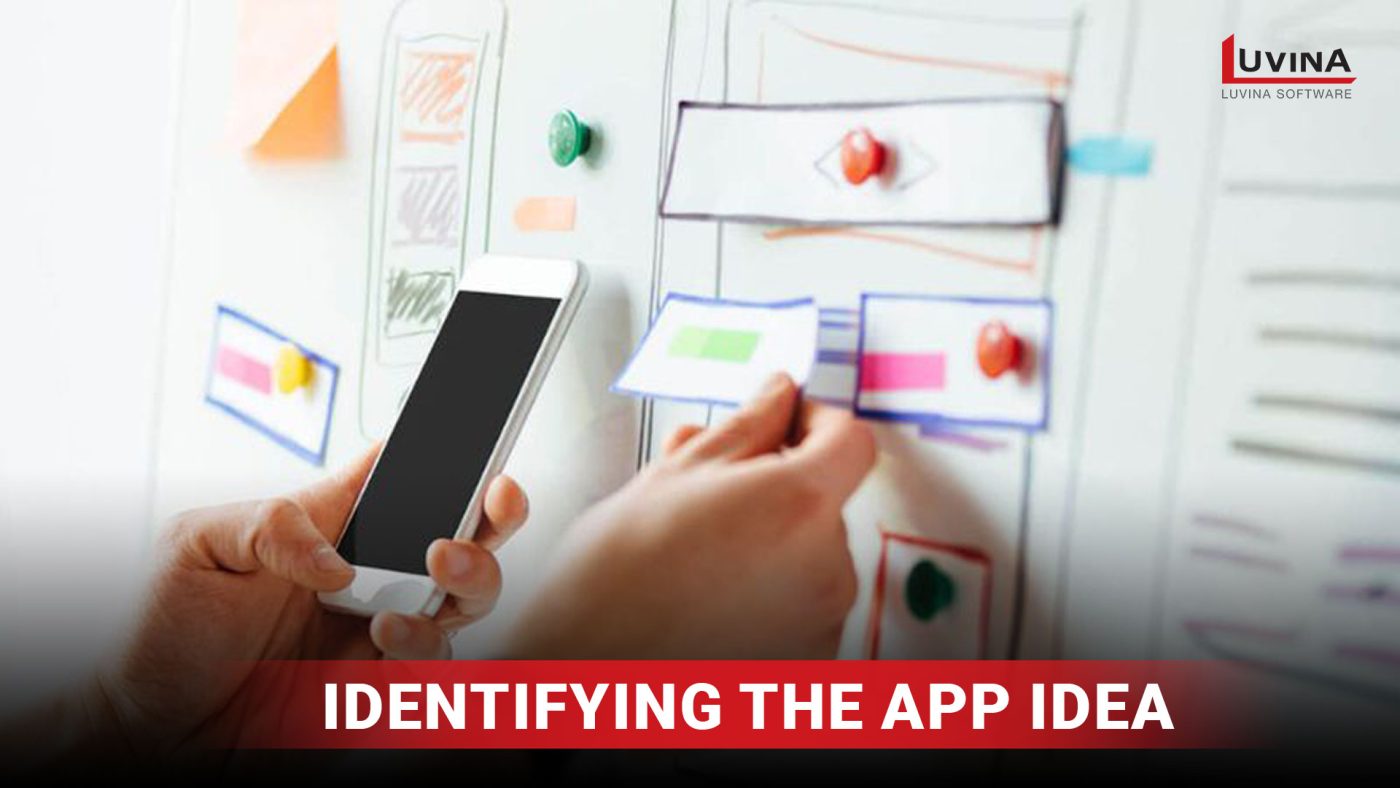Nowadays, developing mobile applications is no longer unfamiliar. Statistics say 42% of small and medium-sized companies already have a mobile app and 30% of businesses are planning to build one.
However, app development is not an easy task. You need to carefully plan if you want to get the best quality product with the lowest cost and in the shortest time.
Below are the 6 essential stages of mobile app development services for businesses that you shouldn’t skip.
Ideation and Conceptualization
In app development service, this is the stage where everything related to the application is clarified. Some factors to consider during this stage are target audience, mobile platform, necessary technologies, etc.
1. Defining the app idea and its objectives
There are specific questions that require your attention to identify the app’s concept and objectives. For example, “What issue do you want the app to solve?”, “How do you want the app to solve it?”, etc.
The ideas and content for your app should aim to help users solve a particular problem.

2. Conducting market research and competitor analysis
After having the ideas and objectives for the app, you need to conduct market research, study potential customers, and analyze competitors to bring your ideas to reality.
Market research helps you understand how to create an app that fits the industry. Analyzing competitors will also help you identify advantages to incorporate into your product. For example, if your competitor’s app lacks a certain feature, you can include that feature in your app.
3. Creating user personas and identifying the target audience
According to the mobile application development services, studying the customer journey and creating user personas thoroughly will help you have a clear vision of what your needed app will be like.
In this step, you need to research factors such as demographics, motivations, behaviors, etc., of your target users. All of these will help you create a customer profile to understand the actual needs of app users.
Mobile App Design and Prototyping
In mobile development services, this is the most suitable stage to begin building the development team. After forming the team with all key members (e.g.: product owner, project manager, BA, developers, UX/UI designers…), you can start designing.
1. UI/UX design and wireframing in mobile app development services
In the UX/UI design phase, mobile software development services will first create the application’s architecture with as many details as possible. From buttons, and pop-up windows to text fields. Every detail serves the purpose of optimizing the user experience.
After UX and UI, the wireframing stage will help visualize the app with all its features and characteristics. The wireframing process can range from sketches with a pencil to highly accurate wireframes.

2. App prototyping and user testing
This is the stage to optimize the app for the target customers. After receiving interactive prototypes, the designers need to work with the development team to address difficulty in logic, and structure, and find ways to balance aesthetics with design feasibility. The designer should also check the final product to ensure it aligns with the original idea.
Even when the designs are approved for testing, mobile software development services need to gather user feedback to continue improving the app.
Mobile App Development
Now, when the app has completed testing, you can start developing it.
1. Choosing the right technology stack
There are 2 tasks that mobile app development services often do in this stage:
Firstly, they analyze development options such as native, hybrid, and cross-platform.
Secondly, they choose the most suitable programming language and framework.
To make development options, you need to consider various aspects of the prototype stage, such as the app’s speed, security, personalization, responsiveness, etc.
After selecting the development options, you can choose the appropriate technology stack. This step will also determine whether to choose regular mobile application development services, Android application development services, or hybrid mobile app development services.
Next, mobile app development services will proceed with selecting frameworks and programming languages that align with the development options mentioned above.
>> See more: Best Framework Mobile to Choose: Native, Hybrid, and Cross-Platform
2. Front-end and back-end development
The next step in the app development stage is to develop the front end. Frontend developers will code the UX and UI designs to ensure that the elements on the app interface guide users on the right path and store data for processing.
Afterward, the backend development stage will involve laying down the foundational code to handle actions from the front end. This is the final stage of app development. It supports building the system architecture, database, security, and other processes.
3. Integrating third-party APIs and services
The best mobile app development services recommend integrating with external services and APIs to provide enhanced features for the app.
If you already have your system, the development team can write an API so that your app can interact with your system or third-party software.

Quality Assurance and Testing
In the Quality Assurance and Testing stage, mobile app development services will ensure that all app functionality and the backend are ready for release.
The QA team needs to do manual testing to identify any issues in usability, data security, or UI, and fix them immediately. Then, the testing process should be automated to improve efficiency and accuracy.
At this stage, mobile app development services will also need to analyze the app’s performance under different conditions. Performance testing will help determine screen loading speed, app size, or if the app meets user requirements.
Mobile App Deployment and Launch
Now, the app is ready to launch in the market. However, your app still needs to get approved by app stores (such as App Store, and Google Play). This process might take a few days to a few months.
Some tasks that mobile application development services recommend you should do:
- – Learn the principles and requirements of the app store platform.
- – Prepare marketing materials and app descriptions.
- – Optimize keywords to increase search.
- – Plan promotion and user attraction.
>> See more: Efficient Strategies for Optimizing iOS App Development Cost
Post-Launch Support and Maintenance

Support and maintenance are crucial stages but often overlooked in mobile app development. Successfully launching the app in the market is just the beginning. You need to continue monitoring the app’s performance, and user interactions to fix any issues promptly (if any) and to ensure the app runs smoothly.
After the app is released, users will start giving feedback about your app. Make sure to read the most common reviews for continuous improvement according to user needs.
Get in touch now
to get a free consultant from us
Conclusion
Developing mobile applications is not easy. You need to plan carefully and continuously monitor even after launching the app to make necessary improvements. Through this article, we hope you have understood the 6 crucial steps of the standard app development process.
For businesses looking to develop mobile apps, the most important thing is to choose a top mobile app development company that can ensure product quality from the mobile app development services list.
Luvina is the best mobile app development service you are looking for. Luvina has nearly 20 years of experience in providing software and IT outsourcing services. For us, customer satisfaction is always a top priority. We can provide a team to work closely with you to meet your requirements at every stage of app development.
If you need further advice on software development services, please contact Luvina for support.








Read More From Us?
Sign up for our newsletter
Read More From Us?
Sign up for our newsletter